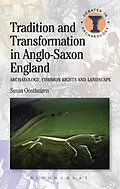Most people believe that traditional landscapes did not survive the collapse of Roman Britain, and that medieval open fields and commons originated in Anglo-Saxon innovations unsullied by the past. The argument presented here tests that belief by contrasting the form and management of early medieval fields and pastures with those of the prehistoric and Roman landscapes they are supposed to have superseded. The comparison reveals unexpected continuities in the layout and management of arable and pasture from the fourth millennium BC to the Norman Conquest. The results suggest a new paradigm: the collective organisation of agricultural resources originated many centuries, perhaps millennia, before Germanic migrants reached Britain. In many places, medieval open fields and common rights over pasture preserved long-standing traditions for organising community assets. In central, southern England, a negotiated compromise between early medieval lords eager to introduce new managerial structures and communities as keen to retain their customary traditions of landscape organisation underpinned the emergence of nucleated settlements and distinctive, highly-regulated open fields.
Autorentext
Dr Susan Oosthuizen is University Senior Lecturer in Historic Environment at the University of Cambridge, UK.
Inhalt
Prologue
Common Pasture
Arable
Explaining Tradition
Innovation
A Joint Endeavour?
Notes
Bibliography
Index
